 New Zealand (1940-1942)
New Zealand (1940-1942)
Tractor Tank – 3 Built
Few tanks have achieved the level of notoriety and even scorn which has been cast upon the ‘Bob Semple Tank’. Few lists of ‘Worst ever tanks’ miss it out and it does seem perhaps a little ungainly at first glance. As such it is ignored for what it really was and for the genuine merits it offered. The eccentricities of the vehicle and the character of the man whose name was applied to the vehicle have become legend.
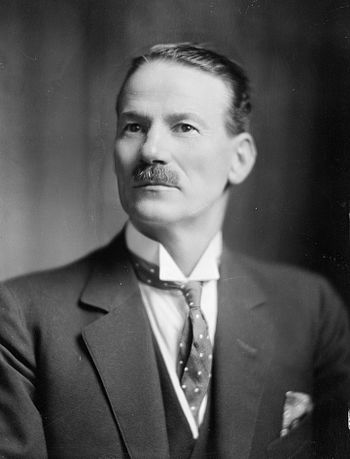 Robert ‘Bob’ Semple (21 October 1873 – 31 January 1955)
Robert ‘Bob’ Semple (21 October 1873 – 31 January 1955)
The character of the man
Robert Semple was certainly a ‘character’ and, in some ways, the vehicle even reflected him and his attitudes. He was born on 21st October 1873 at Crudine Creek, New South Wales. He started life on the rough goldfields of Australia before moving to New Zealand and at various times been a boxer in his own right as well as a miner, industrialist, union leader, and champion of the common working man. He had campaigned against involvement in World War I and was a talented orator and public character.
At one point, he had been prosecuted for refusing to disclose his son’s age to a defense officer and upon the introduction of conscription in New Zealand in 1916 had sought to use the vital position of miners to force the government to abandon compulsory service. In December that year, he was arrested again after advising miners not to be “lassoed by that Prussian octopus, conscription” and even denied a jury trial under the then newly introduced War Regulations Act. Upon his release in September 1917, Semple toured the coalfields and was very well received. After WW1, his political career waned until the Labour party returned to power in 1935 and he became a cabinet Minister for Public Works.
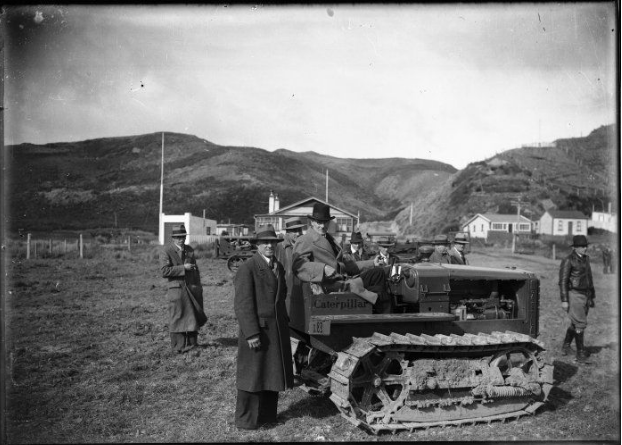
Robert Semple on a caterpillar tractor, between 1935-1940 – NZ National Archives Photo Ref: 1/2-041944-G
This time, when war broke out, Semple was still fighting for the common people but was much less tolerant of dissent. In 1940, Robert ‘Bob’ Semple was given the portfolio for National Service; the de facto Minister for War, where, in a remarkable U-turn, he helped implement conscription. The idealist Semple had become the hardened fighter and pragmatist Semple. A man of strong convictions, virulently anti-authoritarianist and anti-communist, Semple was now an experienced political boxer. He needed to be too, as WW2 was a different beast to WW1.
In WW1, the ideal of sending troops to fight for the mother country was contrasted to WW2 where the prospect of a Japanese invasion of the islands of New Zealand was a very real and very frightening proposition. The Japanese had rolled through the forces of the French, British, and Dutch in the Far East and were openly talking about how undefended and vulnerable New Zealand was. New Zealand was virtually defenseless with just six Bren Gun Carriers in the whole country as its armored force. With Britain fighting for its own survival, supplies of War Materials, from rifles to tanks, were not going to happen for some time. If New Zealand was to defend itself it would have to do it itself. Semple himself remarked that:
“If this country is going to be invaded, we need to have equipment as good as that of the other fellow, if not better… we could not buy tanks from outside, but had to act on our own resources. Luckily we had big tractors here, and they were a godsend. They have proved one of the greatest boons the country has ever known, permitting us to build highways, aerodromes, camps, and fortifications in record time in the Dominion. They have proved invaluable for other urgent purposes outside New Zealand.”
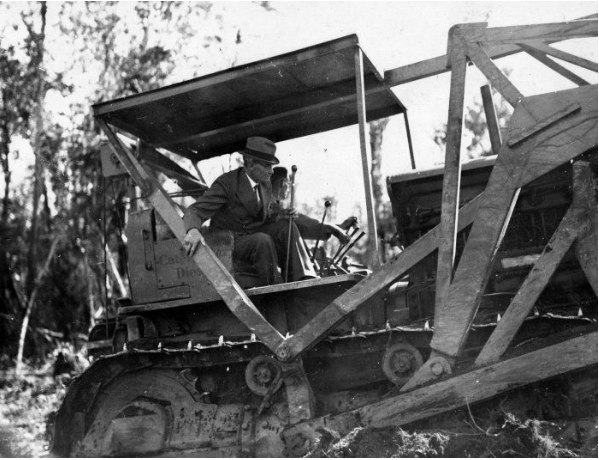
Robert Semple (cane in hand), then Minister of Works, on a Caterpillar diesel bulldozer, 29th March 1939 – NZ National Archives Photo Ref: 1/2-105128-F
A legend is born
New Zealand was facing a potential invasion with no effective armored force, Semple found out that the NZ Defence Department had been making enquiries in the USA for supplies of armor plate. However, Semple had already seen a photograph of a Caterpillar tractor which had been converted in the United States (it is possible that this refers to the Disston tank, however, no direct proof exists) and showed it to Mr. T.G.Beck (Public Works Engineer, Christchurch) who at the time was in charge of a large irrigation scheme in the South and Mid-Canterbury region.
It was going to take some time to obtain blueprints of the American tractor tank conversion but rather than squander time, work began straight away, without the formal plans under the direction of Mr. Beck in the Public Works Department (PWD) workshops in Temuka. Mr. Beck would work with an engineer at the PWD works, Mr. A.D. Todd, and all work was overseen by Mr. A. J. Smith in the capacity as an observer.
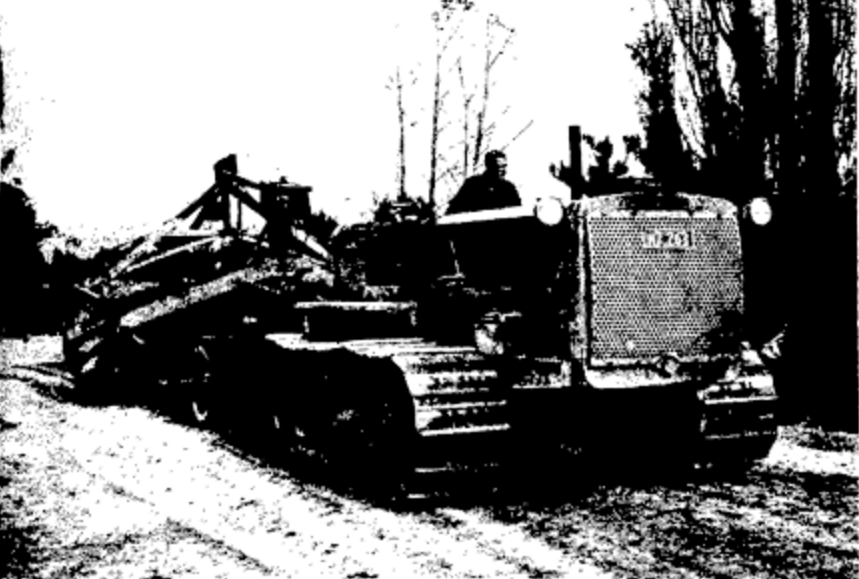
One of the PWD Caterpillar tractors working on a project at Lake Taupo, May 1941 – Photo: Auckland Star
At Temuka, the PWD proposed to take their fleet of 81 D8 Caterpillar tractors and build armored bodies for them. The tractors could be used for their normal purpose and, if called upon for War Service, could have these armored bodies fitted. Very little modification was required of the tractors. The suspension was modified slightly and the track assembly was lengthened slightly. The existing driver’s controls were changed slightly and moved forwards. Mild steel extensions were added to which the body would be attached.
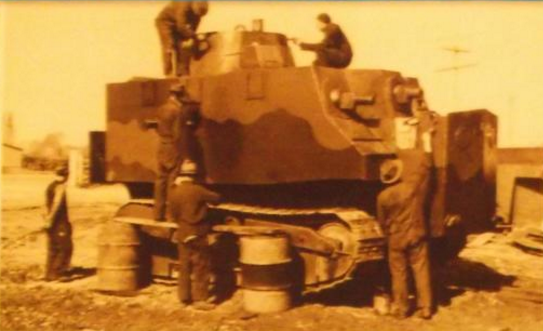
Prototype tank receiving a two-tone camouflage coat of paint – note the lack of the corrugated armor which is yet to be fitted – Photo: Classic Military Vehicle
The prototype
A prototype was ready at the Temuka PWD Depot by June 1940. The existing tractor body was removed and substituted by a 3 ply-plywood mockup of the armored cab attached to those mild steel extensions. Even at this early stage, the idea of a proper cannon for anti-tank use and infantry support was mooted. The original gearbox turned out to be insufficient and therefore an improved 2:1 ratio box was substituted. This resulted in the metal prototype having a shortened engine compartment and wider sides.
A 37 mm cannon in a revolving turret was seen as being of crucial importance, as was the provision of machine guns. It was sadly found to be impossible at the time to obtain a cannon so an additional machine gun was used instead. There are no details of what 37 mm may have been envisaged but the 40 mm 2 pounder gun which was the standard British tank gun at the time was in short supply. Having looked to the USA initially it would be likely that this 37mm gun considered was the 37mm M3 tank gun as used on the Stuart light tank.
The additional turret machine gun brought the armament to a total of six Bren .303 caliber machine guns; one on each side, one over the back, one in the turret, and two positioned forwards in the hull. One on the far right and a second one positioned centrally which would have been very awkward to operate given the position of the engine and would have to have been operated either awkwardly from the side by the driver or other gunner, or by another crew member lying on top of the cowling over the engine. The crew is often quoted as 8 based on these 6 machine gun positions, a commander and a driver but is also variously noted as 6 and as 7 crew. Clearly, the crewing would be dependent on the number of men available and the situation encountered.
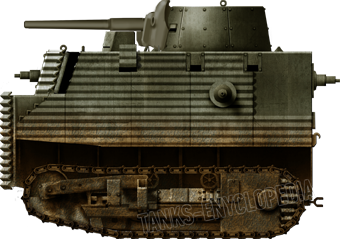
Proposal of a 37mm gun turret.
This prototype was reordered in mild steel and the need was to construct an example for the Army in actual armor plate. Supplies were not available even from Australia so instead, corrugated manganese plate was used. Trials at Burnham Camp on December 1940 showed the speed had been reduced with this additional weight to only 8 to 10 km/h (5-6 mph). Additionally, the bulk of the body meant it rolled badly during off-road movement making firing on the move very difficult. The Army was still frustrated at the lack of a turret mounted cannon but with no other options available relented to have three examples constructed as they were.
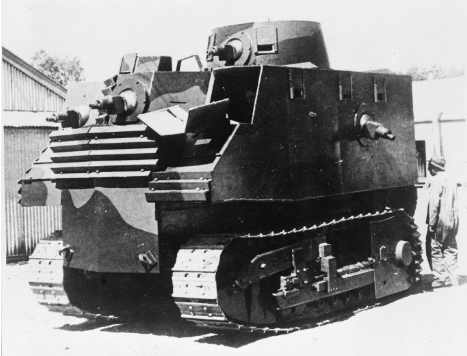
Photograph of ‘Tank designed by Robert Semple between 1940 and 1941’, NZ National Archives Photo Ref: 1/2-050790-F. Note the absence of all of the corrugated armor plating which was not yet fitted and the absence also of the additional armor plates over the machine guns, turret face and drivers hatch
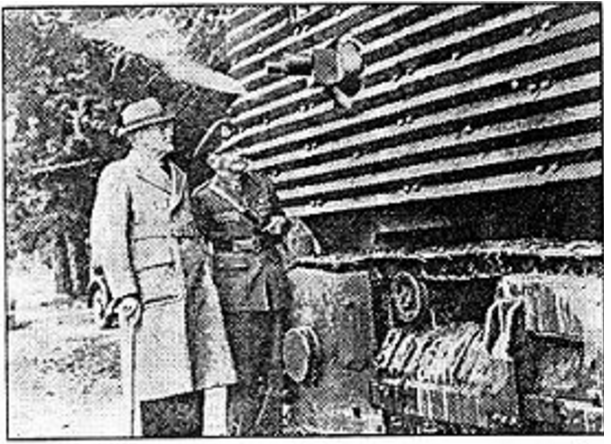
Robert Semple (with cane) accompanied by unidentified staff officer inspecting the very tall sides of the PWD tank. Note this photo shows the back of the vehicle and clearly shows the corrugated armor on the right-hand side extending all the way up the side.
Into construction and the public eye
This construction was carried out in the Railway Workshops in Addington, Christchurch in January 1941 with the first one ready in under a month under the direction of Mr. Hoare. The armored structure of this tank consisted of 8mm thick (0.31 inch) armor plate, fully welded, on top of which was an addition of 12.7mm thick (0.5”) manganese rich corrugated steel plate. Popular myth has it that it used corrugated roofing metal and this is probably the origin of the myth that the vehicle was badly armored. This layering system was devised by Mr. Beck and was “severely tested”. The result was that this arrangement was felt to be sufficient to stop enemy anti-tank rifle bullets up to 20 mm (0.79 in) caliber as well as being easy to fabricate. Trailers were also devised for these vehicles so that they could be towed which, according to the October 1941 assessment by Major General Puttick,
“enables the machine to be moved very rapidly over long distances. Loading and off-loading is a matter of minutes only”
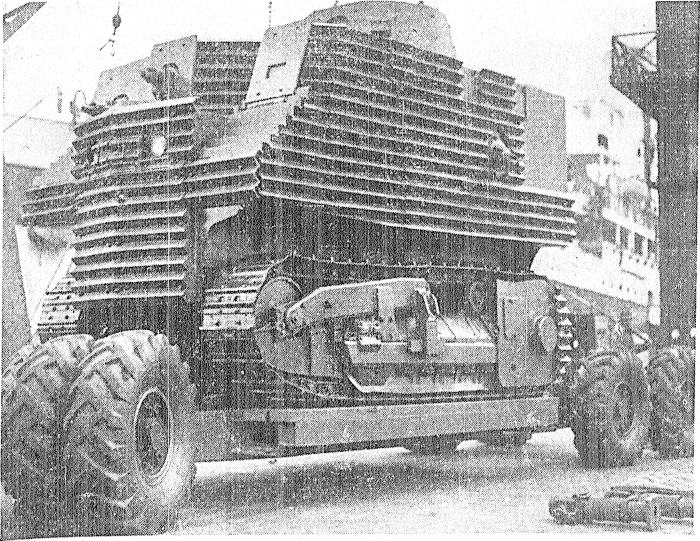
‘Semple’ tank loaded onto special transport trailer for rapid deployment – Photo: New Zealand Herald, 21st April 1941
By March 1941, the second tank was finished, and both took part in a parade in Christchurch on 26th April. One was then sent to Wellington and then on to Auckland to promote the war effort. It was paraded there on 10th May 1941. These public outings, as well-intentioned as they may have been to bolster flagging domestic spirit, instead promoted media ridicule. Only after these public outings did this tank become known as ‘Bob Semple’s Tank’.
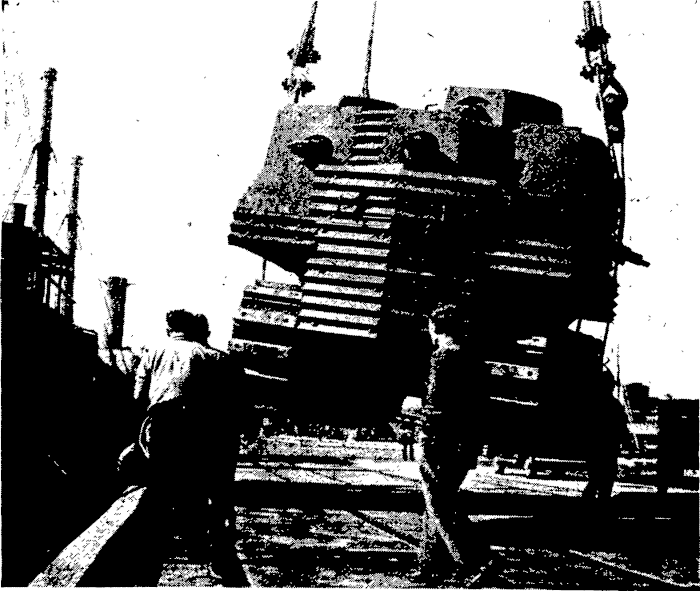
Semple Tank being loaded/unloaded at a port as part of its journey to Auckland, May 1941 – Photo: Auckland Star, 6th May 1941
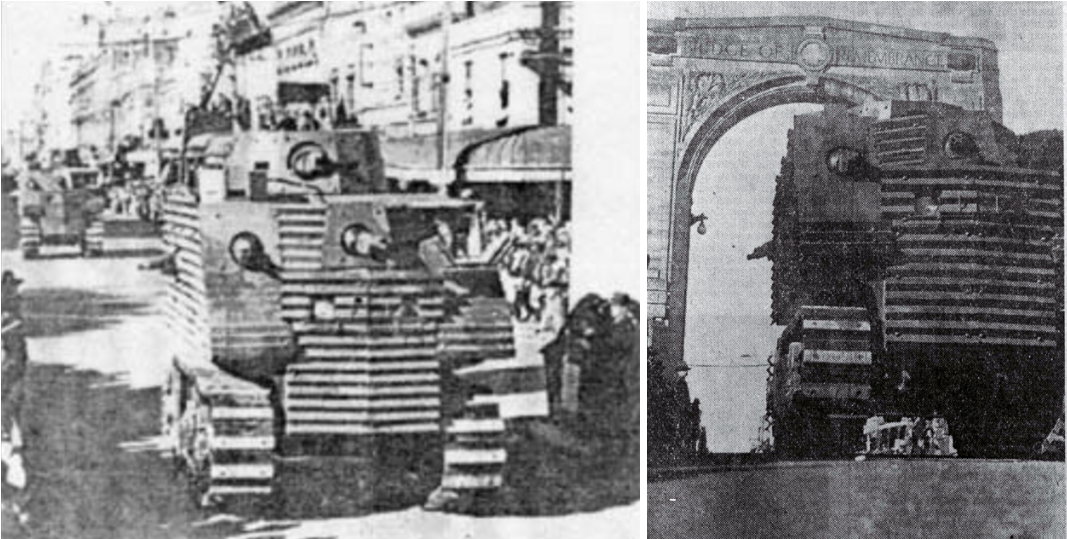
Two ‘Bob Semple tanks on parade in Christchurch on the 26th April 1941. The arch in the background is the Bridge of Remembrance – Photos: Christchurch Libraries and NZ Herald respectively
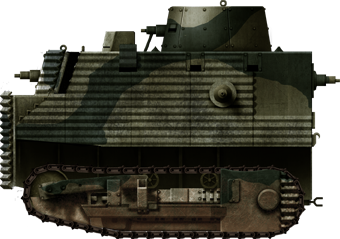
A Bob Semple tank in the livery suggested by contemporary photos.
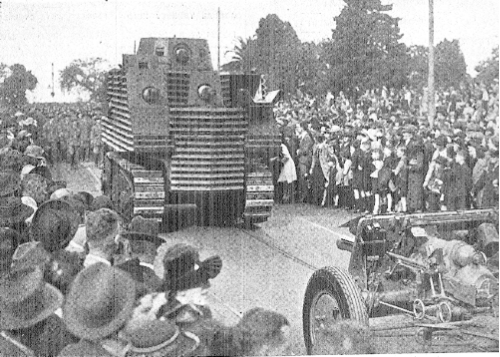
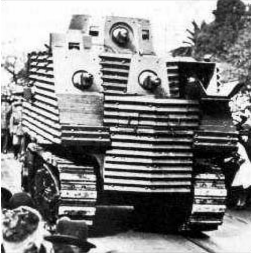
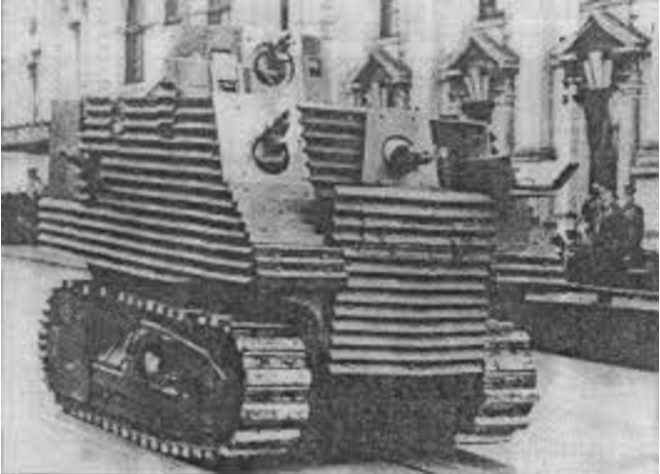
Semple Tank on parade in Auckland, 10th May 1941 – Photos: NZ Herald
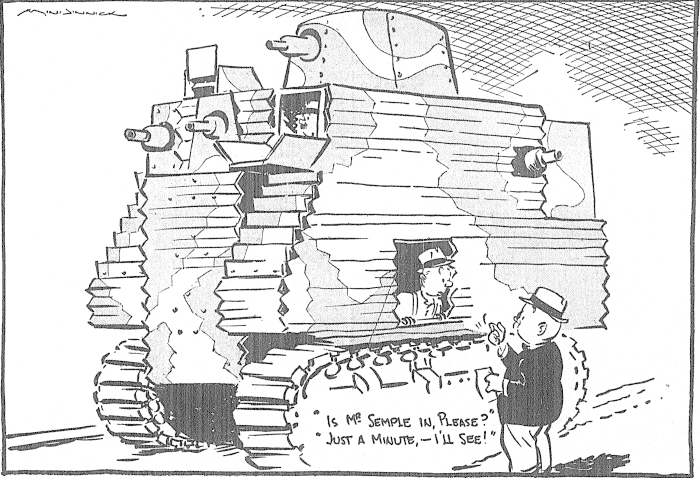
‘Is Mr. Semple in please?’ ‘Just a minute,-I’ll see!’ – Cartoon: New Zealand Herald, 13th May 1941
To the test
In August 1941, the vehicle’s armor was to be subjected to intensive machine gun fire and accurate close range sniping and in doing so highlighted some weakness in the design around the machine gun ports allowing for bullet splash to enter. Even so, in the absence of an alternative tank, General Puttick remarked that it was a very useful weapon for certain styles of fighting. It was powerfully armed and the speed was sufficient. The only unsatisfactory part was the height of the vehicle, in particular, the turret. The turret added more than two feet (>600 mm) to the overall height of the vehicle. Lacking a cannon in the turret, the additional machine gun provided little extra firepower to the other machine guns so General Puttick recommended the removal of the turret. Semple was to comment later that month on this creation that:
“The tank was not a stroke of genius on the part of the Minister of Railways, but an honest effort on the part of the military and the Public Works Department to create something out of the materials we had. It was made by the will and consent of the military”
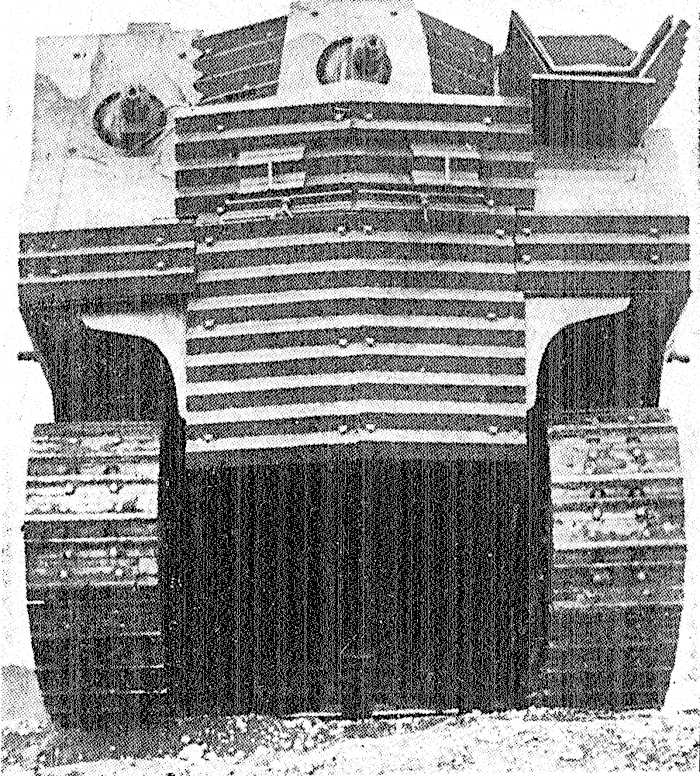
‘25 ton tank constructed by the Public Works Department’ – Photo: New Zealand Herald, 8th October 1941
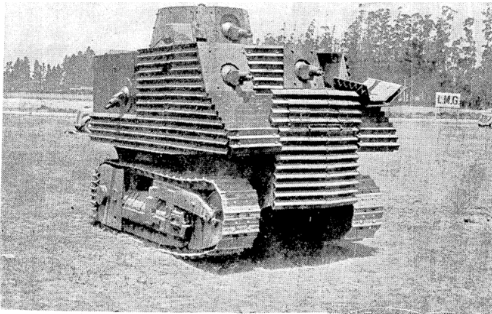
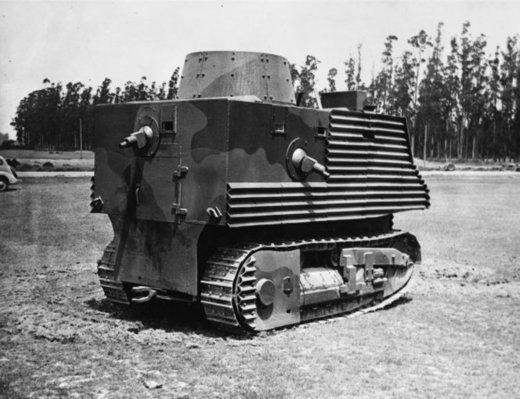
Semple Tank undergoing trials. Note the LMG – Light Machine Gun range in the background
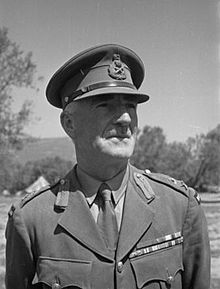 Major General Edward Puttick
Major General Edward Puttick
Further tests of the ‘Semple tank’, as it was now commonly known, were carried out at Burnham camp by 8th October 1941 and witnessed by Major General Puttick (Chief of New Zealand General Staff). General Puttick was an experienced combat officer who had recently returned from the War in the Mediterranean. He noted that that at 25 tons (although the Semple tank did not weight this much) vehicles were still too heavy to cross bridges and would have to ford the streams instead but that overall:
“The arrangement of the turret and of the machine guns was ingenious and efficient” and that “I was impressed with the skill and ingenuity displayed by those concerned in the tank’s design and manufacture, adapting a civilian vehicle for military purposes”
It didn’t matter though if the vehicle had merit or not. It had become tied to Semple personally so his opponents politically could attack him by way of attacking ‘his’ tank and its unconventional appearance combined to doom it to being a laughing stock. This cartoon appeared on 21st October 1941 coinciding with the arrival of the first Valentine tanks in New Zealand.
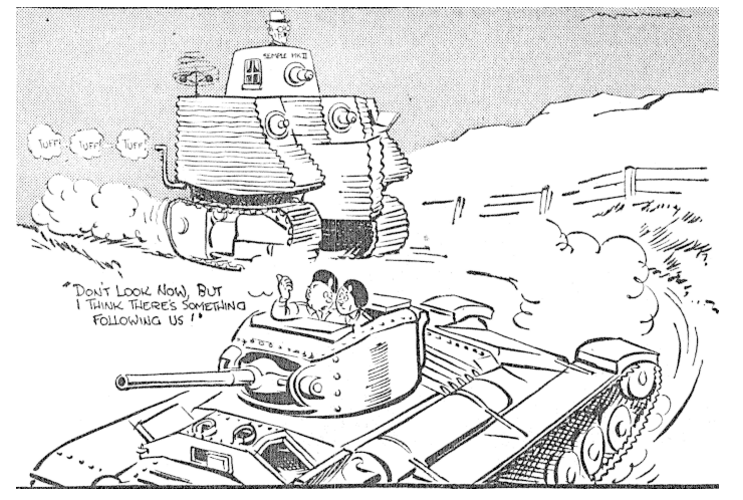
‘Don’t look now but I think there’s something following us!’ Bob Semple appears in caricature with his head out of the turret which is unusual as there was no turret hatch on at least one if not all of the vehicles. A flaw which seems to have gone unnoticed by contemporary commentators – New Zealand Herald 21st October 1941 [Note: The turret of the vehicle is actually marked ‘Semple Mk.II’]
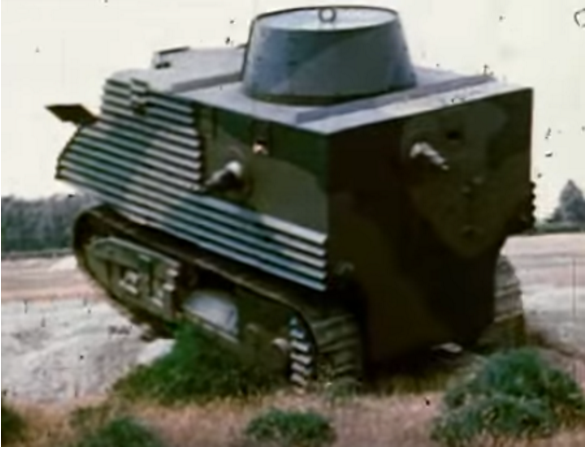
Semple Tank undergoing testing showing the roof of the turret.
A view of the top of the ‘Semple Tank’ turret shows just a simple lifting eye and the absence of a turret roof hatch. Of all of the flaws mentioned of the Semple tank, this lack of a hatch is the most notable by its absence. This would have seriously hindered the observations from the vehicle as well as ensuring a fiery death for most of the crew. A single rear door being totally inadequate for even 6 men to exit in an emergency. Even with that flaw and its other shortcomings, Semple was rightly unrepentant saying in late October 1941:
“That tank was an honest-to-God effort to do something with the material at our disposal when raider were at our back door…instead of sitting down and moaning we felt we ought to do something to manufacture weapons that would help to defend our country and our people”
At some point, these two tanks were officially handed over to the Army, reportedly having had their turrets removed. Suitable cannons had still not been obtained. General Puttick’s final recommendation was that no more of this vehicle type be made and that the three existing vehicles were deemed to be suitable for beach defence instead. Eventually, the armored bodies were stripped back off the tractors and they were returned to their civilian duties. Time had gone by and the invasion threat was over. Better, faster indigenous designs were available, Valentine tanks were being delivered, and the Bren Carrier was in production locally to boot. The Semple tanks were simply not required anymore. The third vehicle, which had remained in Auckland, was reportedly deployed into service in the Pacific theater, albeit stripped down and fitted with a dozer blade.
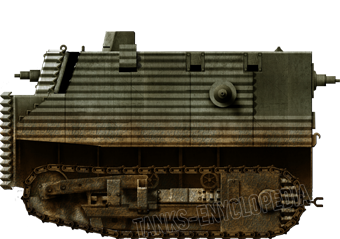
Semple tank without turret
End game
Despite all of the scorn and mockery, Semple was still defiant and with plenty of justification. Under Robert Semple the almost defenseless islanders of New Zealand had developed their own armored force and demonstrated the resolve to fight and to resist. Semple, in a political exchange in September 1943, said:
“When we came into office we had insufficient strength to protect a currant bun from the attack of a blowfly. But if the Japs could be killed with wheelbarrows we could have stoushed them – we had plenty of barrows…two years before the war we quietly slipped machines to Fiji and Tonga and built aerodromes there secretly… it was plain as the day that the Japs would strike south through the back door to Singapore… [island hopping] …to New Zealand..what stopped them this way?”
A retort from the floor mocked Semple saying:
“Probably your tanks, Bob”
to which he responded
“If that is a cheap sneer, you keep it. I had the vision to try and create something while a lot of others were just sniveling” [Laughter and applause to this response is recorded]
This was not the response of a man in any way ashamed or embarrassed but rather proud in what he and the PWD achieved.
Postwar commentators may also continue to sneer at this ungainly machine, but the PWD and Semple had laid down a marker, a line in the sand that New Zealand would defend itself no matter what. Semple, the fighter, the anti-authoritarian, would not give up the defence of his home to the dictatorship of Japan no matter what.
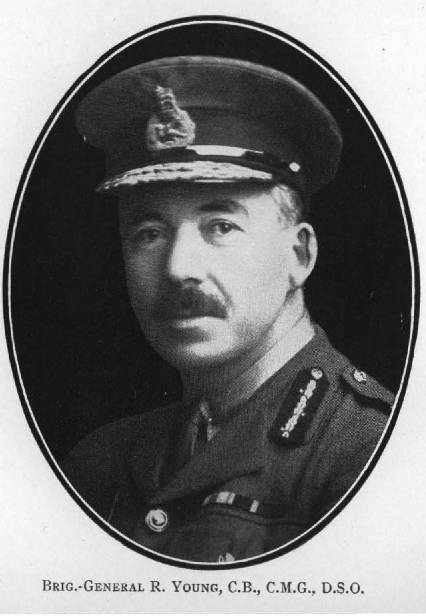 Major General Robert Young
Major General Robert Young
The last word should go to Major-General R. Young (Dominion Commander of the Home Guard) who was touring with Bob Semple in November 1940 promoting home defence. General Young summed up the character of the man saying:
“I am proud to be associated with him. He has for what I wish everyone had – a will to win the war – for when a man has got a will to win, nothing can stop him”
‘Semple Tank’ / PWD Mobile Pill Box specifications |
|
| Dimensions | 13’9’’ x 10’10’’ x 12’’ ft (4.2 m x 3.30 m x 3.65 m) |
| Total weight, battle ready | ~18tons (including 2 tons of armor plate) |
| Crew | 6 (commander, driver, 4 x machine gunners) (additional crew could be carried up to 8 men total) |
| Propulsion | 6 cylinder Caterpillar diesel, 95 kW (127 hp) Also given as 108 hp (flywheel), 96 hp (drawbar) |
| Climb | 1 in 2 grade |
| Fording | 4 feet (1.22 m) |
| Embankment | 4.5 feet (1.37 m) |
| Other notes | Could crush saplings up to 6” diameter Fitted with drawbar for towing of light field guns or an armored trailer |
| Armor | 0.5″ (12.7 mm) Manganese Steel in V corrugated form backed by 0.31″ (8 mm) steel plate |
| Speed | 7.5 mph normal, 1.5 mph (2:1 gearbox) (12 – 2.5 km/h) |
| Suspension | RD8 Caterpiller (1939) modified and lengthened |
| Range | 160 km (100 mi) 60 hours of operation |
| Fuel | 90 litres of diesel held in two frontal fuel tanks |
| Armament | 6 x .303 calibre Bren light machine guns with 25,000 rounds, (1 in turret, 1 rear, 1 left hand side, 1 right hand side, 2 forwards) 37 mm cannon (proposed but not fitted) with 5 machine guns |
| Total production | 3 |
Video
The Years Back: Making Do
New Zealand Munitions
Sources
New Zealand Newspapers
- Evening Post, 16th November 1940
- Evening Post, 31st March 1941
- New Zealand Herald, 1st April 1941
- New Zealand Herald, 21st April 1941
- New Zealand Herald, 10th May 1941
- Auckland Star, 10th May 1941
- Auckland Star – Supplement, 10th May 1941
- New Zealand Herald, 12th May 1941
- New Zealand Herald, 29th August 1941
- New Zealand Herald, 6th October 1941
- New Zealand Herald, 8th October 1941
- New Zealand Herald, 21st October 1941
- Evening Post, 27th October 1941
- Press, 28th October 1941
- New Zealand Herald, 29th October 1941
- Evening Post, 23rd September 1943
- National Library of New Zealand
- Len Richardson. ‘Semple, Robert’, from the Dictionary of New Zealand Biography.
- Te Ara – the Encyclopedia of New Zealand, (accessed 27 December 2016)
- The Semple Tank, J.Plowman, Classic Military Vehicle Magazine

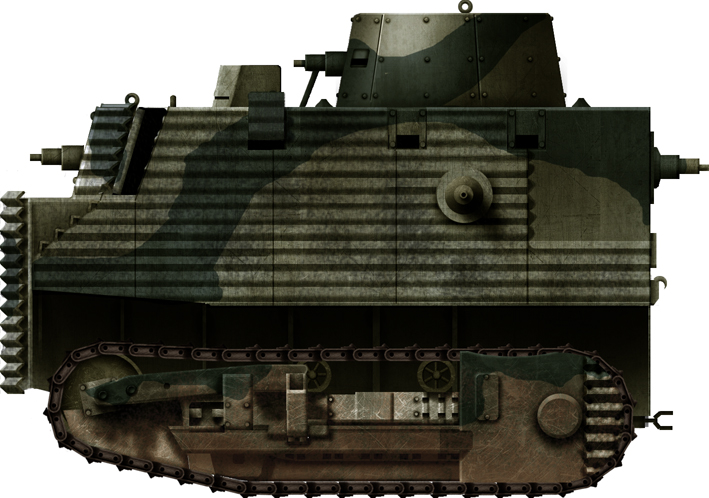
24 replies on “Bob Semple Tractor Tank”
I’d been hoping for another article to covering Japanese prototypes or armored cars; however this is a terrific article.
Such articles are in the works as we speak. Thanks.
– TE Moderator.
I love the historical footage of vehicles. If you guys could keep updating these articles, I would love it even more.
John, we’ve been constantly trying to get a hold of you!
Email us at [email protected]!
I am the daughter of Mr Archie James Smith the overseer/observer of the building of the Semple Tank at Temuka NZ. Always a talking point still in our family.
thats interesting
It must be a point of pride, regardless of how things turned out.
i love this tank because i myself am from New Zealand.
cheers.
charlie age 12
Methven
One of the two best and only tanks of newzealand.
Can’t wait for a schofield tank article.
An article on the Schofield is planned and currently being researched
TE Moderator
best tank ever.
The best tank ever buillt…
Very interesting article and a part of NZ history I never knew . keep up the good work.
Ah, yes. This is the reason the Japs didn’t invade New Zealand. but there is one more reason, the “Big Bob” super heavy tank. Such a monstrosity.
The Big Bob is a fake tank made up by the HoI team.
yes
Bob, is that really you?
I’ve been trying to find you for so long! One of your garden sheds seems to have gotten stuck trying to traverse my driveway.
meme machine
ze semple vill alvays be ze meme machine fur evier!
Lets be Honest, bob semple is the best tank ever produced
One picture is wrongly edited, it is stretched and aligned left rather than center.
You say:
“A single rear door being totally inadequate for even 6 men to exit in an emergency.”
I can clearly see the tank has a hatch on the front as well.
yes it is probably just a vision hatch for the driver
I am an Italian, and as you know we Italians are masters at building tanks. But this is a masterpiece we cannot compete against